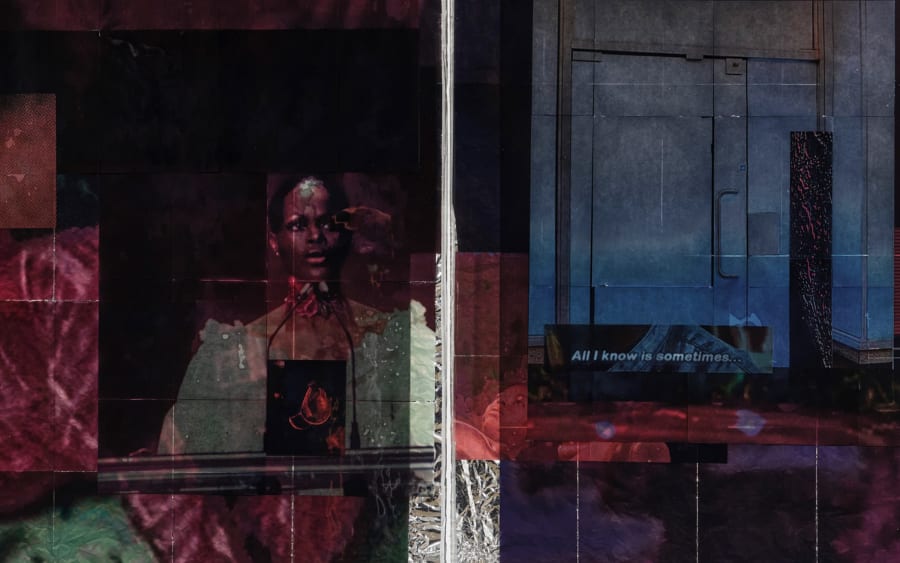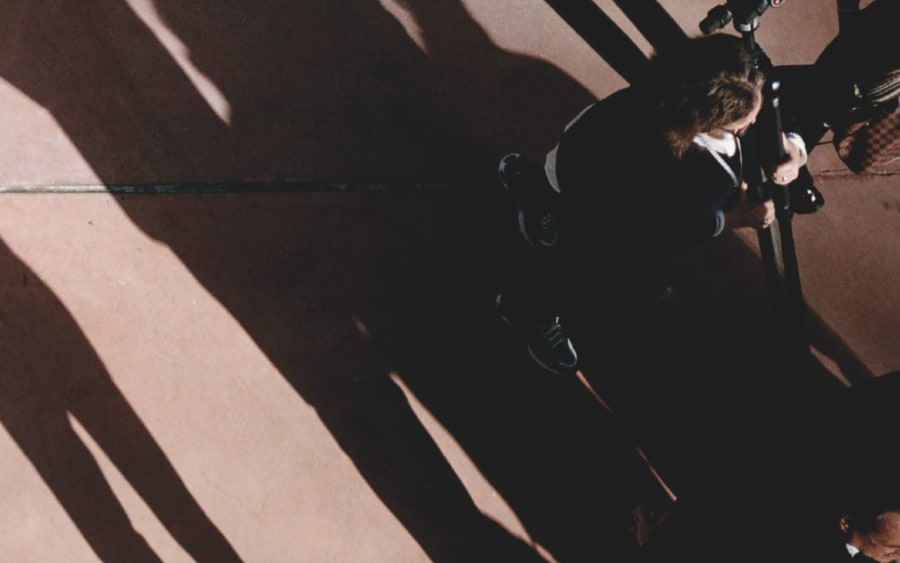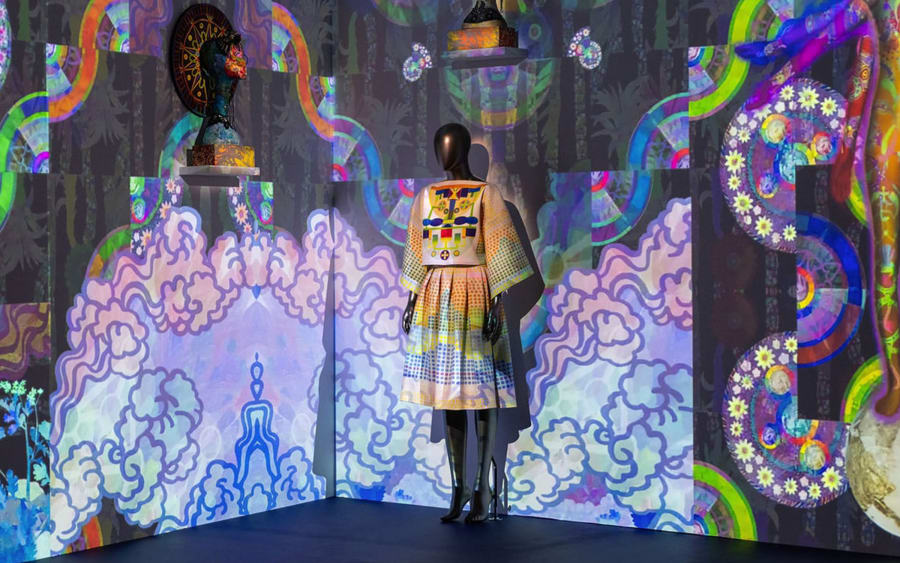Lately, the art world has seemed keen on looking back over the breadth, depth, and utter heft of art star Julie Mehretu’s 25-year career. Since 2019, the artist has mounted a succession of spectacular mid-career survey exhibitions in some of the world’s most visible art institutions, including the Los Angeles County Museum of Art, the Whitney Museum of American Art in New York, the Pinault Collection’s Palazzo Grassi in Venice, the Museum of Contemporary Art Australia in Sydney, and now Kunstsammlung Nordrhein-Westfalen (K21) in Düsseldorf, where ‘KAIROS/Hauntological Variations’ has just opened.
But the artist herself is looking squarely at the present, and into possible futures. The Ethiopian American painter was born in Addis Ababa and raised in East Lansing, Michigan, after having to flee her birthplace as a child due to political unrest. This year, she’s reaffirming her commitment to the continent by launching the African Film and Media Arts Collective (AFMAC) with a series of artist workshops in Cape Town, Dakar, Lagos, Nairobi, and Tangier. The project not only aims to nurture the visions of local artists but also to promote a sustainable framework for pan-African artistic production. The focus – perhaps surprisingly for a painter of Mehretu’s repute – is on film. ‘Rather than…African media being shared through European and Gulf State distribution, we can try to build an infrastructure on the continent,’ says Mehretu. ‘Who tells the stories? What are the stories?’
It’s an uncharacteristically warm spring day in Düsseldorf, and we’re sitting in the sun outside K21’s café a few hours before ‘KAIROS: Hauntological Variations’ opens to the public. Mehretu is relaxed, happy to sit for a moment and nibble on a crispy schnitzel before the event. The show, which occupies the museum’s interlocking, lower-level spaces, is her first major exhibition in Germany for 15 years. She describes it as a ‘distillation’ of the monumental, critically acclaimed show ‘Julie Mehretu. Ensemble’ that ran at Palazzo Grassi alongside last year’s Venice Biennale. Some of the same large-scale paintings are on view here, but so are a number of never-before-shown pieces from Mehretu’s earliest archive, including student works and a rich collection of the source materials – newspapers, books, music – that have inspired her for decades.
Talk turns to Mehretu’s long history of collaboration with poet, musician, and artist friends, but also to the notion of artist as philanthropist: she recently donated more than two million dollars to the Whitney Museum so people under 25 can visit for free. In 2021, she gifted a painting to the Art for Justice Fund, founder Agnes Gund’s five-year program aimed at ending mass incarceration in the United States and bridging policy change and art. (The work sold for six and a half million dollars.) Then there’s the mentoring that Mehretu has done for decades in various contexts, most notably as part of the Denniston Hill residency that she co-founded with longtime collaborators Paul Pfeiffer and Lawrence Chua in the Catskill Mountains in upstate New York. The house and land there have been fostering community and production amongst artists – especially LGBTQ+ and artists of color – since 2005.
The recent spate of mid-career exhibitions has followed the many threads and themes of Mehretu’s impressive oeuvre – starting with the energetic mark-making of her early drawings. Her large-scale works from the 2000s superimposed dynamic marks and colorful shapes on multiple layers of intricately rendered architectural drawings and other diagrammatic details referring to global power structures. In later pieces, she began experimenting with muted noncolors (gray, black) and erasures, ultimately working from just one image of a seminal event (the destruction of Aleppo during the Syrian civil war, say, or the recent wildfires in Malibu). These are blurred into vibrant backgrounds onto which Mehretu adds her marks, which over time have become looser, more varied, and increasingly visceral. Sometime in the 2010s, Mehretu noticed the shift: ‘The architecture was working not just as a metaphor of power but also imposing a limit on what the marks could be,’ she says. ‘When I was able to lift off from the grid, and find liberation elsewhere, there was a crescendo of changes. I’m still in this process. It’s not linear: There’s a constant back and forth.’
The systems in her early works were broad-view overlays of historical buildings, maps, transport hubs, and art-historical references. (She’s often spoken of trips to Rome as a child, where she was enraptured with the paintings she saw in the Vatican Museums and elsewhere.) But the more recent pieces zoom in on snapshots of our volatile present – invariably abstracted in color, shape, and form. ‘I’ve always found abstraction as a space of possibility and, as Nairy [Baghramian] says, ambivalence,’ she explains. ‘It offers what Édouard Glissant talks about – its opacity is a space of radical potential – [it offers the possibility] to push boundaries and limits from this particular space.’ It’s as if she’s processing global events and movements with and for us, in a new visual language. Mehretu’s newest series, ‘TRANSpaintings’ (2023–2024) – blurs and shimmers of color and gestural marks on milky polished acrylic, mounted in freestanding aluminum sculptures called ‘Upright Brackets’ by Nairy Baghramian – play with space, light, and shadow. The ones on view in Düsseldorf are based on images of the 2021 insurrection in the US, and the Russian invasion of Ukraine in 2022.
This direct engagement with the world continues beyond Mehretu’s own artmaking. Take the aforementioned series of workshops she’s leading this year as part of the AFMAC. These grew out of her collaboration with BMW, for which the artist designed an ‘Art Car’: a BMW M Hybrid V8 race car, the body of which is an artwork. ‘I said no a few times,’ she tells me. What compelled her finally to agree was a photo of a prior BMW ‘Art Car’ jury, on which sat the late curator Okwui Enwezor – a pivotal figure in breaking open and expanding art’s Eurocentric canon. ‘I thought: “What would Okwui do?”’ explains Mehretu. ‘I knew I needed to do something ambitious.’ So, she didn’t just design a car, she also conceived the series of workshops to take place in existing institutions throughout Africa, like the Raw Material Company in Dakar, founded by the late Koyo Kouoh (who also played a pivotal role as a collaborator in the overall development of AFMAC). Supported by BMW and co-created with Emmy-nominated film producer Mehmet Mandefro, the series launched in Lagos in April: The rest will unfold over the course of the year, culminating in an exhibition at Zeitz MOCAA in Cape Town in 2026, and an online film archive.
No matter what kind of marks Mehretu is making in and on the world, she seems to have mastered the art of inspiring the people around her to dream just a little bigger. In late 2024, a piece called Uprising of the Sun was revealed on the facade of the future Obama Presidential Center on the South Side of Chicago. Former US president Barack Obama commissioned Mehretu to create the monumental, 26-meter-high, stained-glass window, whose riotous colors are already visible to the public from the outside. (As she offers me some of her schnitzel, Mehretu talks about how challenging Uprising was to make: learning to work with an expert fabricator on glass and never seeing the piece as a vertical whole during production wasn’t easy.) And, as difficult as it might be to dream big and maintain inspiration right now, kairos, part of the title of her Düsseldorf show, is, after all, Greek for ‘the right moment’ or ‘the critical time’. ‘With the reversal of certain gains in human rights that we have, our behavior now is more consequential than it has ever been before,’ says the artist. ‘This is a time to act, work, and try to invent new futures.’
‘KAIROS / Hauntological Variations’ is on view at Kunstsammlung Nordrhein-Westfalen (K21) in Düsseldorf, through October 12, 2025.
Julie Mehretu is represented by White Cube (London, Hong Kong, New York, Paris, Seoul), Marian Goodman Gallery (New York, Los Angeles, Paris), Carlier | Gebauer (Berlin, Madrid), and Berggruen Gallery (San Francisco).
Kimberly Bradley is a writer, editor, and educator based in Berlin. She is a commissioning editor at Art Basel Stories.
Caption for top image: Portrait of Julie Mehretu by Linda Inconi-Jansen.
Published on May 30, 2025.


